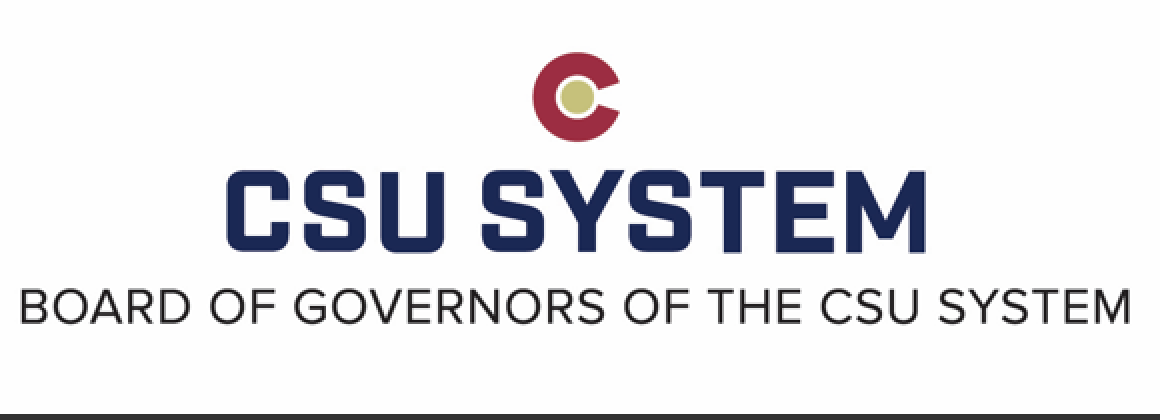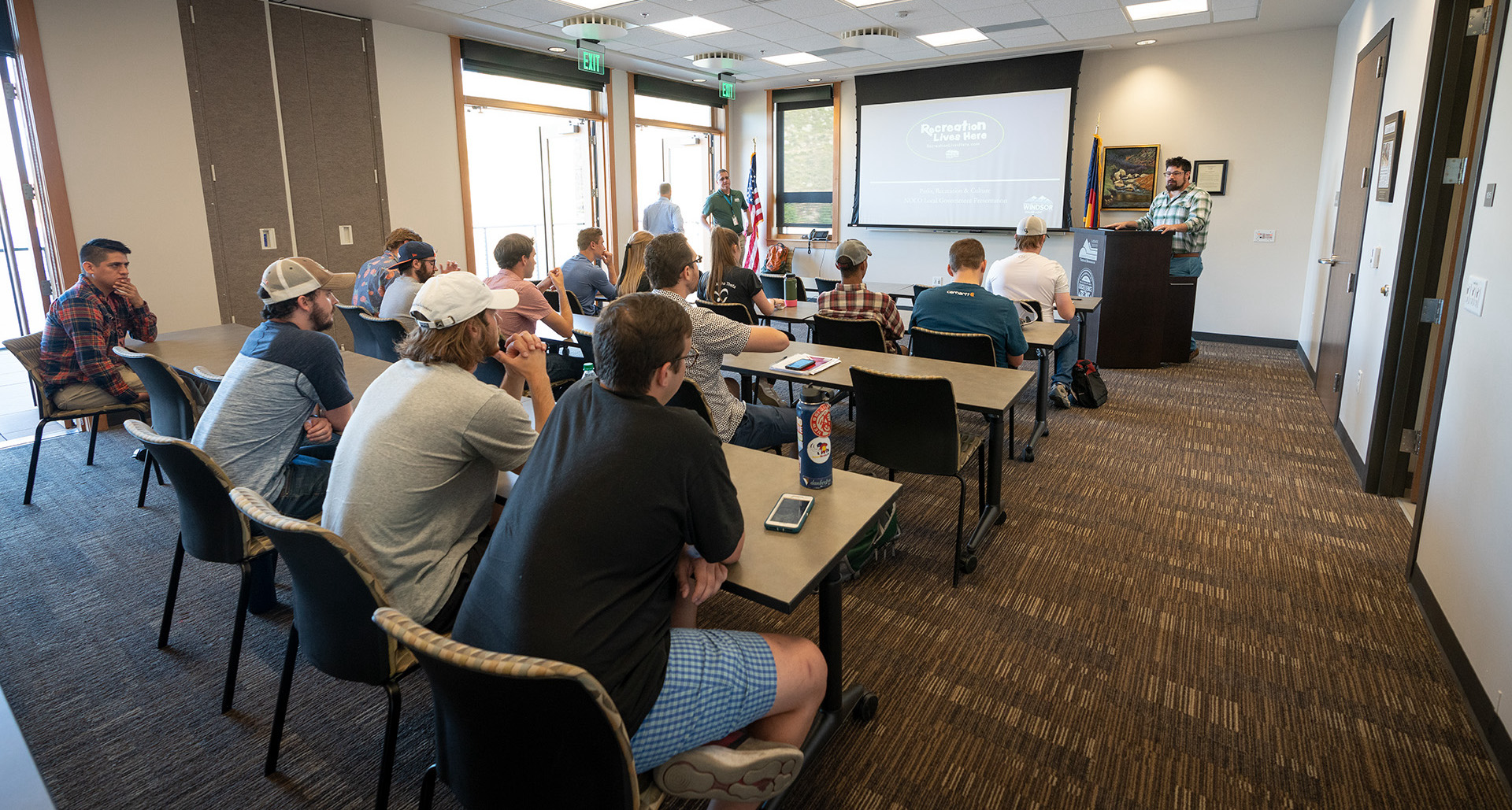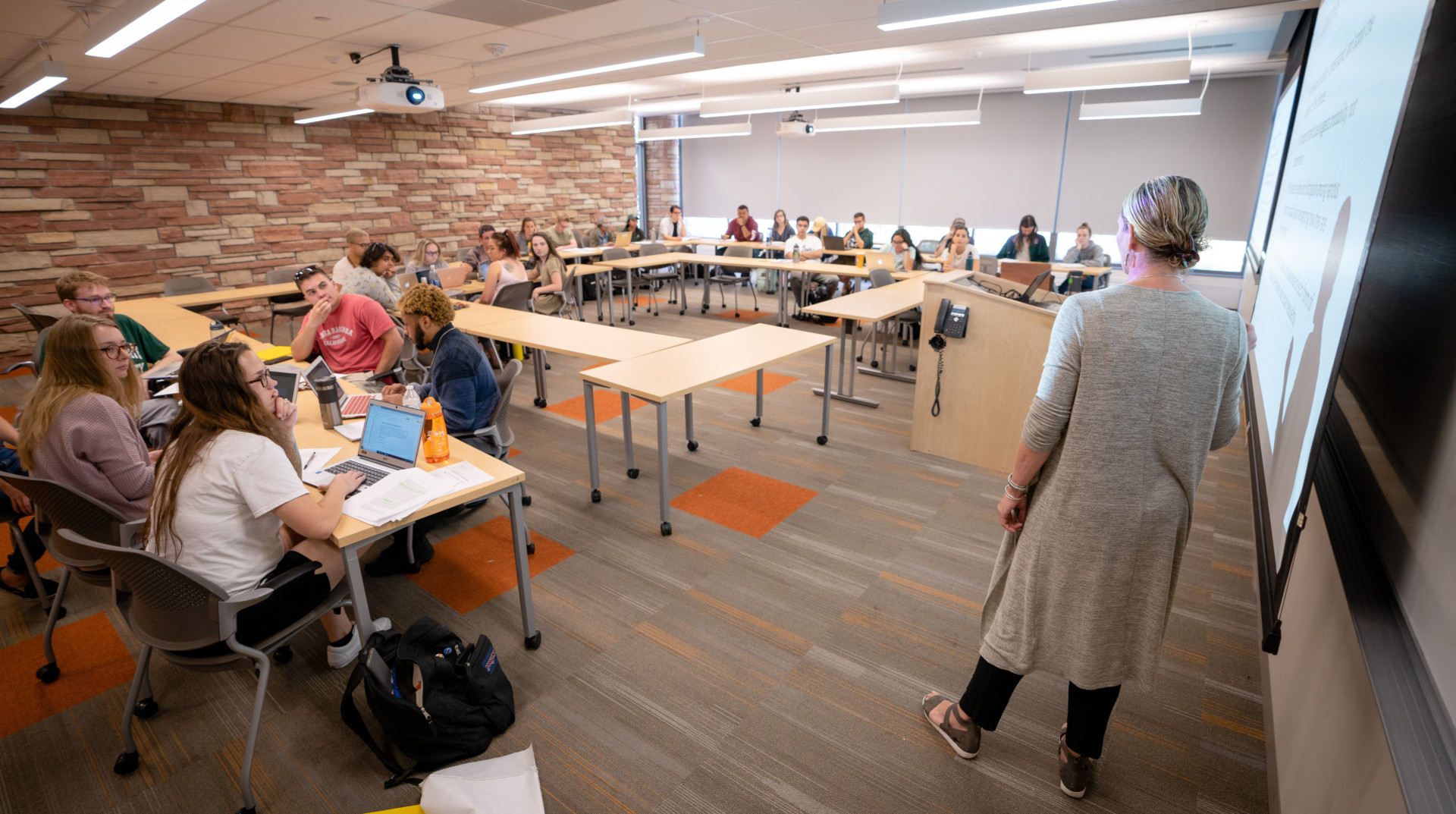
Faculty and staff compensation is his administration’s top priority, Interim President Rick Miranda reported at the Oct. 6 Colorado State University System Board of Governors meeting held at the Lory Student Center.
The urgency of compensation was a dominant theme throughout Board, faculty and public comments during the two-day meeting. The Audit and Finance Committee reported compensation increases are a fundamental assumption upon which it will base the 2023 budget.
Miranda reported that, while CSU was recently listed as the state’s top educational employer by Forbes magazine, “We have room for improvement. We are not standing pat. I will address the issue with faculty.”
Anthropology and Geography Professor Mary Van Buren and Languages, Literatures and Cultures Associate Professor Gretchen O’Dell said results from 457 respondents in a recent faculty survey document the level of impact.
“There is low morale,” Van Buren said. “Compensation is our biggest concern.”
O’Dell reiterated there is a high level of stress around compensation for all tenure-track and non-tenure-track faculty, as well as graduate students. She added that it results in a retention issue, which has a direct effect on student retention and graduation rates.

In his report, Board of Governors Faculty Representative Andrew Norton indicated that policies around non-tenure-track faculty and being involved in and understanding the budget process are two areas of focus for task forces formed by the Faculty Council. Other compensation-related priorities include evaluating the current contract efficiency and shared governance.
Throughout the two days, Board members discussed how compensation, retention and other factors play into the escalating national debate about the value and affordability of a college degree.
Board Chair Kim Jordan said that the Board is committed to amplifying the value proposition of a college degree.
“We realize work conditions and compensation are top issues,” Jordan acknowledged.
Board members discussed how colleges and universities across the nation face similar issues and will be looking for innovative solutions from peer institutions of higher learning.
“Compensation issues can be addressed top down and bottom up,” Miranda commented. “One of those ways is by offering affordable housing.”
As an example, the interim president referred to CSU recently breaking ground on a joint affordable housing project near Timberline Church. The community partnership initiative is expected to provide up to 60 units for eligible employees in the next 12-18 months.
Beyond affordability, Board member Betsy Markey added that an important part of the narrative is how the apartments will use sustainable materials. “It’s a model for how we should build homes,” Markey said, echoing the University’s strong commitment to the environment.

Sustainability
Sustainability was another recurring theme in the meeting. For the eighth consecutive year, the Association for the Advancement of Sustainability in Higher Education’s Sustainable Campus Index Rankings placed CSU in the top five among doctoral institutions. This year, CSU is ranked second, following four years at number one.
CSU plays an international leading role in food, livestock and soil sustainability research, according to a presentation by College of Agricultural Sciences Dean James Pritchett and faculty members. The presentation highlighted programs such AgNext, which provides a public-private partnership for sustainable animal agriculture. According to program director and Professor of Animal Sciences Kim Stackhouse-Lawson, AgNext at Colorado State University is a leader for research in animal and ecosystem health while enhancing profitability of the supply chain. It serves as the crossroads for producers, industry partners and researchers to come together to innovate real-time solutions for sustainable animal agriculture.
CSU’s climate-smart research facility at ARDEC is the largest university research facility of its kind in the nation. It is equipped with the best emissions measurement technology that evaluate greenhouse gases from cattle in feedlot and grazing settings.
The College of Agricultural Sciences Soil Carbon Solutions Center is building tools needed to accelerate the deployment of credible soil-based climate solutions, measure their impact, and bring them to scale, according to Executive Director and Ecologist Jane Zelikova. The Center has engaged interdisciplinary research to accelerate the adoption of regenerative agricultural practices that build soil carbon on working lands. Because soil is one of the largest natural carbon reservoirs, work conducted at the Center has the potential to address climate change and improve environmental, economic and social sustainability of food, fiber and bioenergy production.
In a separate report, Interim Vice President of Engagement and Extension Kathay Rennels reported on how CSU is partnering with CSU Pueblo and other agencies to extend the benefits of the University’s agricultural research and development to rural communities. The systemwide Rural Initiative is focusing on accessible education, improved health (mental health, aging, prevention), thriving economy (especially economics in agricultural spaces), and vibrant communities (the College of Liberal Arts providing faculty/training resources).
“Every place I’ve gone around state, I’ve heard nothing but strong connections with CSU. Most of the connections are around agriculture – which it should be,” Board Vice President Armando Valdez reported. “We hope to expand into other areas beyond agriculture – impact and engage. Ag is a strong leverage point we can push out from. … I appreciate that you are making sure we can afford and sustain the programs we implement.”

Increased enrollment
Pritchett also reported that, like the rest of CSU, the College of Agricultural Sciences had a noticeable increase in enrollment this fall. About 70 percent of students in the college identify as female, 37% of students are the first members of their members to attend college, and one-third identify as racially minoritized.
One key group in which agriculture will play a central role in strengthening relationships will be Native Americans. A position that is currently in the interview process, CSU’s new assistant vice president for Indigenous and Native American Affairs, will report directly to the University president.
The AVP will lead CSU’s outreach efforts to Tribal communities and schools and work with Tribal leaders to determine partnerships to increase student recruitment and retention. Internally, this AVP will work to help educate and inform the University community on Native and Indigenous priorities on campus and at the local, state, and national levels. One of the responsibilities of the AVP will be managing funds for projects and initiatives that benefit Native American and Indigenous peoples.
At the recommendation of the Native American Advisory Council, the Board of Governors took the unprecedented step of amending its Real Estate Investment Funds policy to designate that CSU use annual revenues from its Endowment Land Income Fund specifically to benefit members of federally and state-designated Tribes. This may include programs for undergraduate and graduate students, programs for faculty and staff, and outreach and engagement activities. The affected properties were part of the lands acquired from local Tribes to establish CSU under the Morrill Land Grant College Act in 1862.